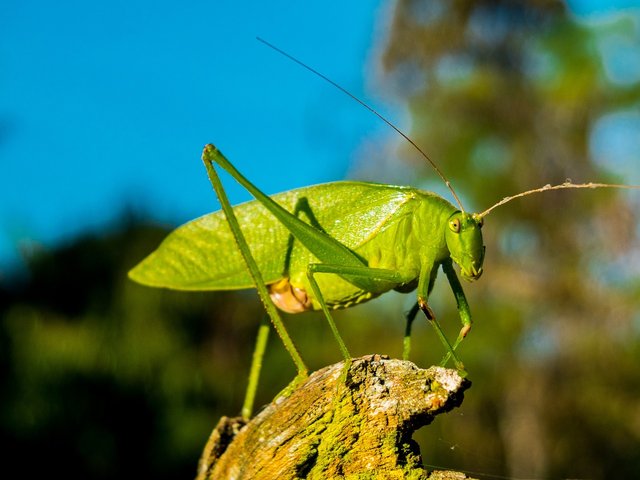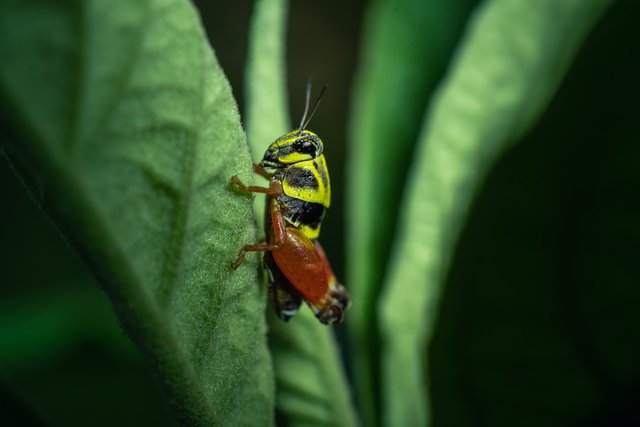Hello all Steemian friends, how are you, I hope you are fine.

Breeding grasshoppers is an important process in their life cycle, allowing them to reproduce and maintain populations. Grasshoppers belong to the order Orthoptera and have a life cycle that involves several stages from egg to adult.
Meeting and Mate Selection: The breeding process begins with the meeting of male and female grasshoppers. Typically, males use crickets or siren sounds to attract females. They can also use distinctive body movements to attract attention. Once the females respond to the male's call, they will approach and begin the process of copulation.
Copulation: Copulation is the next step in grasshopper reproduction. The male will approach the female and use his antennae to harass her. Once accepted by the female, they will perform copulation, where sperm is transferred from the male to the female. This process is important because the sperm received by the female will be stored in the spermatheca, a structure in the female's body that functions as a sperm storage bag.

Fertilization and Egg Storage: After copulation, the female will look for a suitable place to lay her eggs. The place chosen is usually on damp ground or in protected places such as between rocks or grass. The female will use her ovipositor to dig a small hole in the ground and lay her eggs in it. These grasshopper eggs come in various sizes and shapes depending on the species.
Egg Development: Grasshopper eggs will hatch after several weeks or months, depending on environmental factors such as temperature and humidity. The eggs hatch into nymphs or larvae, which are the initial form of grasshoppers. Nymphs will undergo a series of molts or skin changes as they grow and reproduce. At each molt, they will undergo morphological and structural changes aimed at achieving their adult form.
Adult and Advanced Life Cycle: After several molts, the nymphs will eventually reach the adult stage. Adult grasshoppers will search for food, reproduce, and repeat this cycle. This breeding cycle is important for maintaining grasshopper populations in certain ecosystems, because they act as plant eaters and prey for other predators.
Thus, grasshopper breeding is a complex and important process in grasshopper ecology, ensuring their survival in a variety of habitats throughout the world.
Downvoting a post can decrease pending rewards and make it less visible. Common reasons:
Submit
Upvoted. Thank You for sending some of your rewards to @null. It will make Steem stronger.
Downvoting a post can decrease pending rewards and make it less visible. Common reasons:
Submit